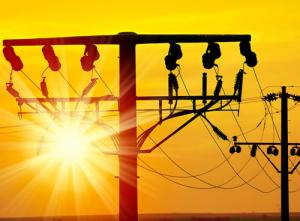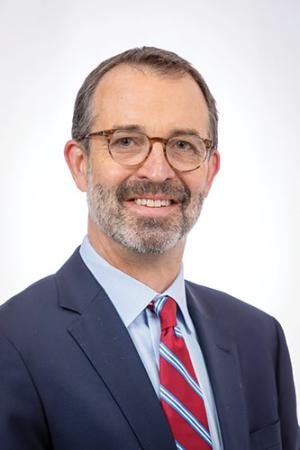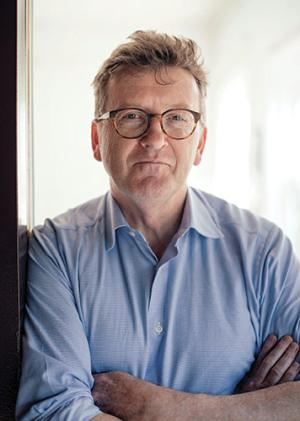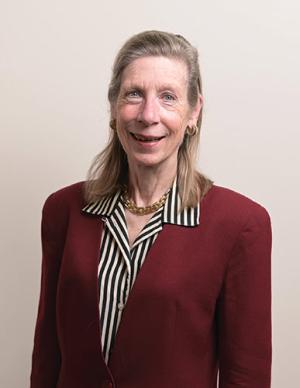Renewable Energy
Michael Skelly is the former CEO of Clean Line Energy.
Rob Gramlich is the president of Grid Strategies.
Barbara Tyran is Director of the Macro Grid Initiative at the American Council on Renewable Energy.
How to get new, reliable, and strategically-positioned electric transmission appears to be the issue of the day, with FERC considering new interconnection rules, formation of the Joint Federal-State Task Force on Electric Transmission, and everyone in the energy and utilities industry seeking answers as to how to get more built. The only agreement is it isn't easy.

It pays to look at shovel-ready electric transmission projects, which is what our experts here did, as examining what works can portend the success of future ventures. They issued a report last year on twenty-two much-needed projects, many designed to access wind and solar resources.
PUF discusses here that report and the hopes for overcoming the travails involved in building new transmission with two authors, Michael Skelly and Rob Gramlich, along with Barbara Tyran with ACORE, an organization promoting the transition to a renewable energy economy.
PUF's Steve Mitnick: There's frustration in the buildout of the transmission grid, particularly for renewables, but there's been progress, which you have tracked. Barbara, what are your thoughts?
Barbara Tyran: I appreciate the chance to talk about the 22 Ready to Go report. The report's co-authors are here today. What this project did, was look at twenty-two, high-voltage transmission projects that are ready to go, identified them, and talked about some of the policy barriers inhibiting transmission to go forward.
 Rob Gramlich: I usually say the biggest barrier is cost allocation and recovery, because there is a clear need and plenty of private capital, but no functional way to recover the cost of a transmission investment that benefits entire regions or multiple regions.
Rob Gramlich: I usually say the biggest barrier is cost allocation and recovery, because there is a clear need and plenty of private capital, but no functional way to recover the cost of a transmission investment that benefits entire regions or multiple regions.
Since the report came out in April 2021, two of the projects are now under development. One is in Wisconsin, and one in New York State. Although not completed yet, it's a sign of progress but there's much promise with the other twenty projects, as well as more transmission that needs to be built around this country.
PUF: Michael, is there a reason for optimism? There hasn't always been reason for optimism in long-distance transmission.
Michael Skelly: There's reason for cautious optimism. There're a few big projects like TransWest Express, SunZia, Grain Belt, which are multi-state, and almost at the cusp of being able to get into construction with a few nudges here and there. Some are contemplated in the infrastructure bill, not specifically, but mechanisms to help push them over the top.
One is the anchor tenant provision, whereby the Department of Energy would help fill out the capacity on lines. Given where a few of these projects are in terms of permitting status and possible availability of this new funding mechanism, which has already gotten through Congress, signed into law, we can be somewhat optimistic we may see movement on large-scale transmission.
 Michael Skelly: The biggest roadblock is we don’t plan the grid for the future. We have PJM plan its spread, SPP plans it, MISO plans it, but they plan it in the context of more intraregional needs, and nobody does interregional planning.
Michael Skelly: The biggest roadblock is we don’t plan the grid for the future. We have PJM plan its spread, SPP plans it, MISO plans it, but they plan it in the context of more intraregional needs, and nobody does interregional planning.
PUF: Rob, are you cautiously optimistic, a little bit more than Michael?
Rob Gramlich: I'm optimistic, mainly because we've done this before. We have successes to point to. About half of the current U.S. wind fleet is there only because we had successful, proactive transmission policies with the associated cost allocation.
That winning formula of proactive regional planning with cost allocation across all the beneficiaries has worked many times over. We did a lot of that from 2007 to about 2012.
It's a long story regarding how it ground to a halt a decade ago. But now, there's a recognition of how you can get it done. There's acknowledgement that it's always hard, the cost allocation is hard, and permitting across multiple states is very hard.
 Barbara Tyran: The 22 Ready to Go report looked at twenty-two, high-voltage transmission projects that are ready to go, identified them, and talked about some of the policy barriers inhibiting transmission to go forward.
Barbara Tyran: The 22 Ready to Go report looked at twenty-two, high-voltage transmission projects that are ready to go, identified them, and talked about some of the policy barriers inhibiting transmission to go forward.
But those challenges can be overcome. Sixteen out of seventeen of the MISO MVP projects a decade ago got permitted, and the final one still might, so that's a good batting average. There's no reason to be defeatist. Also, there's a lot happening in D.C. and at the RTOs we can talk about in terms of proactive regional planning now.
PUF: What do you see as the biggest roadblocks to get through a couple of those projects, whether it's siting, cost allocation, or financing?
Michael Skelly: The biggest roadblock is we don't plan the grid for the future. We have PJM plan its spread, SPP plans it, MISO plans it, but they plan it in the context of more intraregional needs, and nobody does interregional planning.
The RTOs don't do it, and the government doesn't do it. We rely on individual actors, companies like ours, or the external folks. Then you've got individual entities planning in the nooks and crannies where you would expect the RTO to plan.
Upon them falls the burden of putting together projects at enormous cost, more than a hundred million dollars of development capital to put it all together, without a lot of, there's no such thing as certainty in life.
I don't think they should have certainty, because they should be taking the risk, but it's without a clear revenue model in some cases. If you're connecting a couple of the grids in the U.S, it's not entirely clear how you get paid for that. That is from a putting-it-all-together piece.
The outcomes are far from certain, and development expenses are high. That's a big factor. There are a few projects that are going to defy expectations. Sometimes the planning horse will catch up with the project cart.
We've got projects like one of your old dreams, Steve. Others may not be familiar with this, but Steve worked for years, trying to connect renewables from upstate New York down to Manhattan. That was in the early to mid-2000s.
It was clearly a good idea. But it took another sixteen years, driven by the demand for renewables in Manhattan, before NYSERDA said, why don't we select a few projects to deliver this power from upstate New York — hydro, wind, solar — down to New York City and we're going to pay for this.
They conducted a bid or budget projects participated. Two were selected. One of those two, the Champlain Hudson project has been under development for more than a decade, an idea as Steve knows better than anybody, that's been around for twenty-plus years. That all sounds depressing but the world is catching up with this idea.
PUF: Barbara, who had the idea to bring this report together, tracking the projects, and why?
Barbara Tyran: The credit goes to Michael, Rob, and a colleague, because they issued the report in April 2021, prior to my arrival at ACORE.
Michael Skelly: I have a funny story. In the summer of 2020, somebody asked us, what's ready to go? We started to put together this list and it was driven by discussions like, what if there were further incentives for renewable energy? What would that look like and what would all that cost?
We started putting together a list and the list came together like, these are the projects that are kind of ready. There were a couple of things left off the list, but we can come back to that. Then in March, all of a sudden, this report with my name on it, popped up in my inbox and all this other work had been done, and my name was on it too.
PUF: Rob, tell me why you dove into this, and passionately?
Rob Gramlich: In the middle of 2020, we foresaw an opportunity to get significant clean energy policy. It's been our view for a long time at Grid Strategies, and also at Americans for a Clean Energy Grid, that transmission is the key barrier to clean energy.
We wanted to communicate the realistic opportunity that was available to policymakers, precisely because of this defeatist attitude people get when they casually read news stories about how hard transmission is to build.
We were aware of a lot of projects around the country that have viable prospects. All of them were at or near the finish line in terms of permitting and the other steps that developers need to go through. We knew some of them weren't going to happen.
We didn't know which ones. We got a lot of insight from Skelly, who knows the business, the developers, and what's happening on the ground.
We combined Skelly's market knowledge with a lot of our research from our Grid Strategies team poking around news reports, interviewing developers, looking at NERC databases, RTO databases, and came up with a list of twenty-two projects. There are valid reasons why a few more should have been included, or a couple maybe not.
We'd like to get started on regular updates of this list. But for the time they were mostly accurate. They did succeed in communicating the message that there is a big opportunity here.
The report showed up on the White House website the week we released it. There're a lot of folks at the Department of Energy who talked about it, and word got around. It did raise people's sights about the transmission opportunity
PUF: Rob, when senior policymakers ask about transmission, what do you say?
Rob Gramlich: We get a lot of questions. The typical question I get, from a Hill staffer or a regulator is, we want to move transmission or clean energy forward and heard transmission's the biggest barrier, so what should we do about it?
My focus is in trying to generate policy ideas, supported by research, about what can work, and what is feasible. There're a lot of other people lobbying, and I can never keep track of what committee is doing what. There're a lot of people working on this from different angles.
Our focus is trying to generate the ideas, need, opportunity, and put it out there. I usually say the biggest barrier is cost allocation and recovery, because there is a clear need and plenty of private capital, but no functional way to recover the cost of a transmission investment that benefits entire regions or multiple regions.
PUF: In two, three years, are we going to be in a better place with transmission, than where we are now?
Barbara Tyran: Yes, we're going to be in a better place. It's ideal that the federal government is looking at this and there has been Congressional legislation already passed in the Infrastructure Act that supports transmission.
If there's a reconciliation bill, we may see more incentives for transmission. FERC is looking at transmission through a rulemaking process, that's looking at cost allocation, generation interconnection, and transmission planning.
That process is alive, and FERC has created a Joint Federal-State Task Force on Electric Transmission. There's opportunity for collaboration across the federal and state regulators. Those meetings are progressing well. President Biden mentioned it in a Town Hall meeting a few months ago.
We see the entire government involved and moving forward. It's such an important issue and important time as we realize there are abundant, renewable energy resources that can be unleashed and utilized if we had greater transmission capacity. Yes, 2024 will show considerable progress in this regard.
Michael Skelly: As that report points out, there are a bunch of projects ready to go. We now have the mechanism to help nudge them along. We've got leadership and we're at a time where there's almost unprecedented amounts of capital wanting to invest in this energy transition.
Sadly, we're reminded in Europe of the importance of energy security. Why it's important we tap our own resources for electric power is a bit of a tangent, but we're reminded we may have a role to play in helping our allies with energy security. To the extent we build our renewables and use our power sector, which might free up natural gas for emergency situations, as Europe brings more renewables online and reduces dependence on imports from Russia.
Rob Gramlich: In a few years, we will be further along. Barbara described the policy initiatives. There's a tax credit that Skelly and I worked on together to help develop in the legislation and it's still pending. That may yet pass this year.
That would be the first time there'd be a tax credit for large, high-capacity transmission. Even without that, there were a number of provisions passed in the bipartisan law last year.
I'm excited about FERC's transmission planning and cost allocation rule that has been under discussion for over a year. It's teed up and ready for a final rule this year. That could generate a significant increase in planning. FERC generally recognizes that transmission planning currently is a misnomer.
We're not planning for the future diverse mix, and we need to, and it's harder to say rates are just and reasonable if we don't do that. I think they're going to fix that, and that could be huge.
PUF: There's this list of twenty-two, so what's your favorite project, and what do you like about it?
Barbara Tyran: It's wonderful that you were a precursor to all of this effort on transmission and bringing renewable energy power to New York City. That has got to be a rewarding and meaningful experience for you.
As we all know, that's been a thoroughly thought-out process, but the end results are exciting and represent tremendous progress and leadership on the part of many people, including yourself.
Rob Gramlich: There are a lot of good projects out there to tap into good resource areas. That's one category. Another category is projects to connect regions and even connect the interconnections, which would be beneficial for reliability, as well as clean energy.
We also need to start working on planning a full macrogrid because the economies of scale keep going all the way to the coastlines. I don't see an end to the benefits until you get all the way across the country.


